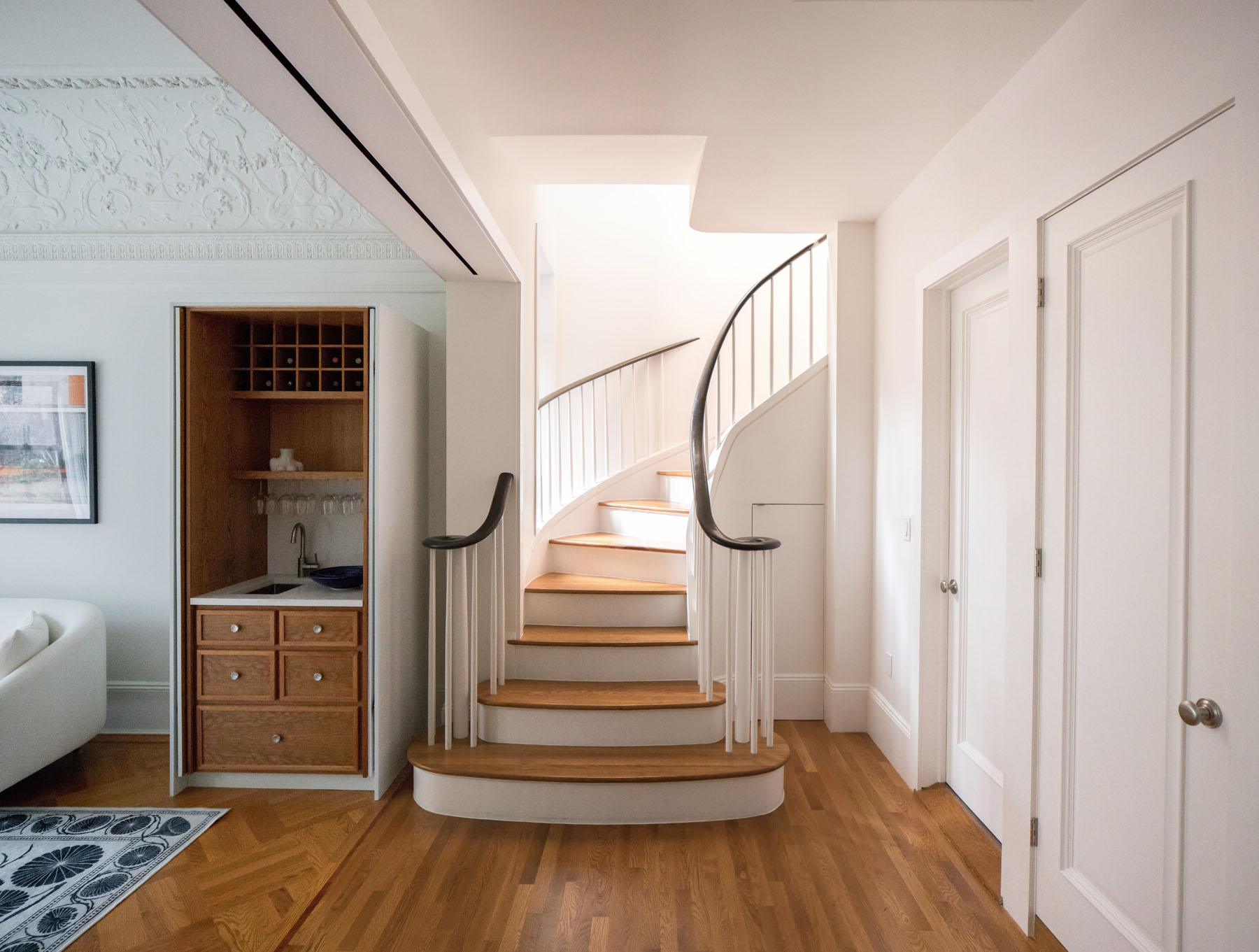How to combine apartments in NYC

How do I begin working with an architect for my townhouse combination project?
As architects, we have often begun working with homeowners as soon as they find out that a neighboring unit will become available.
One of the first things we will ask for is the buildings “alteration agreement”, which is a document that outlines the rules and regulations of proposed renovations in the building, for things like soundproofing, waterproofing, and how to work with the existing plumbing, electrical, and mechanical systems in the building.
As soon as you know that there may be an available space adjoining your apartment, reach out to us to schedule a site visit. We’d be happy to confirm the feasibility of either a horizontal or vertical combination. During this walkthrough we will examine if there are any structural concerns that may cause issues for a proposed combination, or if there are any building systems that might pose problems for a horizontal or vertical combination.
Most large apartment buildings in NYC are “cinder slab” buildings, meaning that they have a steel column and beam structure, and concrete slab floors filled with concrete by-products. This means that the vast majority of large buildings wouldn’t have load bearing walls, so we can usually easily combine two units horizontally by removing or creating an opening in a dividing wall.
For a vertical combination, we will need to install steel beams at the opening in the floor or ceiling, but this is also manageable provided that we aren’t interfering with any building systems.
Small apartment buildings in NYC usually have slightly different structural systems, but there is usually a way to achieve the goal of combining units as long as the loads are accounted for.
What is the condo or co-op board approval process for an apartment combination?
After we have worked together to confirm the feasibility of the renovation, the unit is purchased, and we have finalized the layout, we will submit the proposed renovation drawings to the board. The board will often have a management company who reviews and coordinates the paperwork between the board members and another third party reviewing team.
These third party reviewing teams are called “reviewing architects (or engineers)” and they are retained by the board to confirm that the proposed renovation as outlined in our drawings and specifications is in line with the building’s alteration agreement. Oftentimes there will be a few rounds of comments and edits requested by the board, but we usually find that the renovations get approved after three rounds of edits and 1-2 months of correspondence.
What is the Department of Buildings approval process for Apartment Combinations?
After approval by the board, we will then submit the plans to the Department of Buildings (DOB). The DOB allows most apartment combinations in multi-family buildings to be completed without changing the Certificate of Occupancy, so the DOB process can be streamlined.
As the architects we will submit the plans to using the DOB’s online portal, and usually within a few weeks we will receive comments from the plan examiner that gets assigned to the project. The comments then get addressed via updates to the drawings, and we then resubmit.
The timeline for approvals varies depending on the specifics of the project, depending on the number of rounds and resubmissions required, but we typically see a timeline anywhere from 2-3 weeks to 2-3 months.
How long will the construction process last?
After approval by the DOB, we can begin the coordination process with the board, building super, and management company. There is some paperwork that needs to be filed with the DOB prior to construction, and oftentimes a board will require a deposit and a signed Alteration Agreement.
Once all of the paperwork is in place, and the construction contracts are signed, we can begin the process of protecting the spaces that are to remain and preparing for the demolition work. Demolition is usually one of the quicker stages of the project. Usually an apartment can be demolished in about a week.
From there, the timeline varies based on complexity, but as a rule of thumb we usually plan for 4-6 months for a smaller project and 8-12 months for a higher complexity project.
How much does an apartment combination in NYC cost?
As with everything in construction, the cost of the project varies, but as a starting point we usually plan for around $400-500 per square foot for a horizontal combination, and $600 per square foot for a vertical combination.